Color theory is a body of principles that provide guidance on the relationship between colors and the physiological impacts of certain color combinations.
Color theory is one of the most fundamental areas of painting. The importance of understanding color theory far exceeds simply knowing how to mix colors together (for example, knowing that yellow and blue make green).
As an artist, you do not need to worry yourself about all the complex underlying principles of color theory. Rather, all you need to understand is the general application of color theory and the relationship between colors. Color theory is a fundamental base of understanding for artists and should not be ignored.
Color theory will help you understand the relationship between colors and how we perceive them.
In this post, we will discuss all the major elements of color theory. However, this will only just touch the surface of it. Color theory is an incredibly complex area. Luckily as artists, we only need to know certain elements of color theory that relate to us.
- The History of Color Theory
- Color Theory Terms
- Color Temperature – Warm Versus Cool Color
- Color Combinations or Schemes
- The Psychology of Color Theory
- Idealized Views of Color
- Learning Color Theory as an Artist
- Summary
- Take the Quiz
- Additional Readings
- Want to Learn More?
- Thanks for Reading!
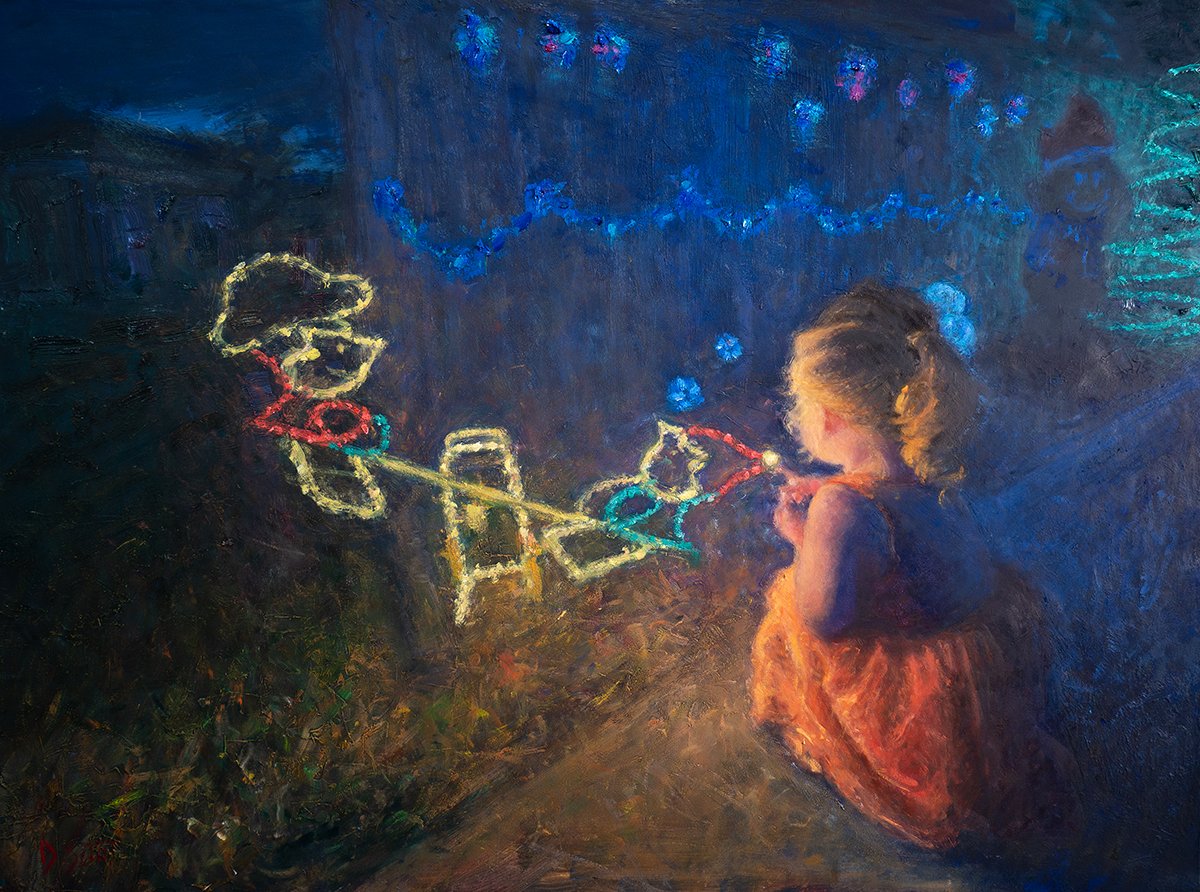
The History of Color Theory
General principles of color theory were evident in the writings of Leone Battista Alberti (c.1435) and the notebooks of Leonardo da Vinci (c.1490). The first color wheel was developed by Sir Isaac Newton around the start of the 17th century. This color wheel was an arrangement of red, orange, yellow, green, blue, indigo, and violet on a rotating disk.
Since the origination of the color wheel by Newton, it has become one of the most powerful tools available to artists for explaining the relationship between colors.
The three primary colors are red, blue, and yellow. The three secondary colors are green, orange, and purple, which are made by mixing two of the primary colors. There are six other tertiary colors.
Using the primary colors, you could mix pretty much any color in the spectrum. This is why a solid knowledge of color theory is so important when it comes to painting and mixing colors. This is also why you should always at the very least have the primary colors on your palette.

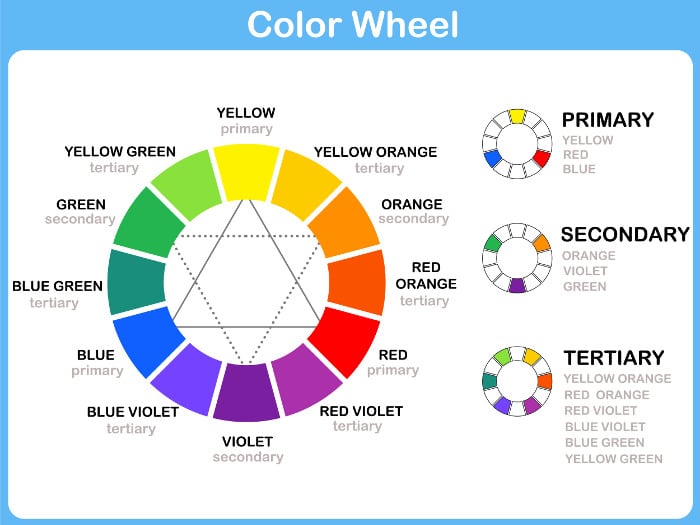
A simple red, blue, and yellow color wheel that you can place next to your easel.
Color Theory Terms
There are a number of color theory terms you will come across in art that are commonly misunderstood and confused.
Hue
The term “hue” is often used as a simile for the term color. Hue generally refers to the dominant wavelength of color out of the twelve colors on the color wheel (being the primary, secondary, and tertiary colors).
For example, the hue of navy is blue. The hue of burgundy is red. The hue of sap green is green.
The colors below are hues.

Saturation
Saturation is a measure of how pure a color is. You can reduce the saturation of a color by adding gray or a color on the opposite side of the color wheel (which essentially kills the color).
If you completely de-saturate the color wheel, you are left with the following:

Tone
Tone is a widely misunderstood term and many artists are not entirely sure what it means, despite it being used so commonly.
Tone is a broad term used to describe a color that is not a pure hue and is not black or white. In many cases, artists use tone to describe a color that has been grayed down (de-saturated).
Value
Value is how light or dark the color is, on a scale of black to white. Value is widely considered to be one of the most important variables to the success of a painting.
A general rule I like to follow for painting is:
- To increase (lighten) the value of a color – add white and/or yellow.
- To decrease (darken) the value of a color – add blue, black, and/or raw umber.
Value should be simple to understand, however, the inclusion of color can make it a challenging concept to grasp. You can have different colors which have the same value. If you take color out of the picture, then you will be left with just a range of black to white colors, with black being the lowest and white being the highest value.
This is why drawing is so highly regarded for improving painting ability, as it makes it easier to grasp the concept of value without having to worry about the inclusion of color.
It is widely considered by artists that value is more important than the color used in a painting. This is because value really sets the structure of your painting.
A value scale is below, starting with the highest value (white) to the lowest value (black). Between is basically a grayscale. You can make a colored value scale by adding white to increase the value and black to decrease the value. When you take the color away (de-saturate) the scale should look exactly the same as the value scale below. It is that translation between color and value which is extremely difficult to learn in painting.

High Key Versus Low Key
You will often hear paintings described as being high key or low key. This refers to the overall value scale used in the painting. A high key painting has a high-value scale (light) whilst a low key painting uses a low-value scale (dark).
High or low-key paintings often have a very limited value range. Below is a low key painting by Vincent van Gogh (painted before he found color):

Below is a high-key painting by Claude Monet.
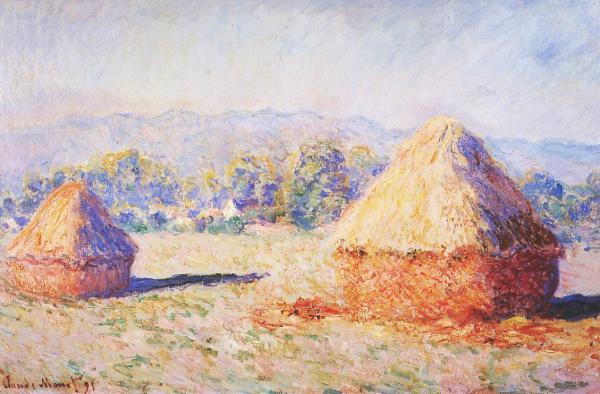
Tints and Shades
Put simply, a tint is a color plus white. A shade is a color plus black. You can get a range of tints/shades by adding varying levels of white/black.
TIP: At the moment, these are just words. They have no benefit without application. So I urge you to think of this scenario to put the terms into perspective. Say you have a tube of red paint. Most beginners would think, great, one color to use in my painting. But by adding different amounts of white, black, and gray, you have infinite variations of that color at your disposal. Once I understood this, I really started to see the options that were available to me.
Color Temperature – Warm Versus Cool Color
The color wheel is divided into warm and cool colors. When a warm color is placed next to a cool color, there is a very strong contrast. Alternatively, when a cool color is placed next to another cool color (for example, green next to blue), there is a pleasing, harmonious effect. These color combinations are discussed in more detail in the section below.
Warm colors traditionally indicate activity and light. Cool colors, on the other hand, indicate calm, distant, and soothing environments.
White, black, and gray are generally considered neutral colors. I get the most use out of these neutral colors not by using them for what they are, but rather to change the value of my colors. For example, if you have cadmium red on your palette, you can add various amounts of gray to make a range of tones.
At the start of a painting, you should determine whether you want to achieve a warm, cool, or neutral (balanced) feel. When I write neutral, I do not mean just to use white, black, and gray, but rather an equal balance of warm and cool colors.
Learn more:
Color And Light – What Is Color Temperature
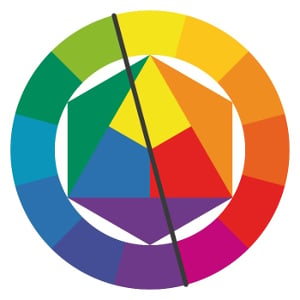
Color Combinations or Schemes
There are a number of commonly known color combinations that can be used to evoke certain emotions from the viewer.
Before starting a painting, you should briefly consider your color combination to ensure it aligns with your desired statement of the painting. For example, a complementary color scheme could be used for an aggressive and active scene. Whilst an analogous color scheme could be used for a calm and passive environment.
Here are some of the most well-known color combinations:
Complementary
Complementary colors are opposite each other on the color wheel. When placed next to each other, there is an extremely strong contrasting and vibrant effect. If overused, your painting may become jarring and uncomfortable to look at.
You should select a dominant color and use the other color as an accent.
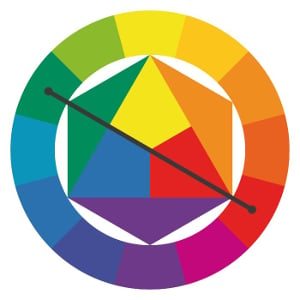
Analogous
A relaxing color combination using colors positioned next to each other on the color wheel. Analogous color combinations were famously used by impressionist artists such as Claude Monet to create beautiful harmonious paintings.
It is often most effective to select one dominant color, a secondary color and a third accent color.

Triadic
A triadic color scheme uses three colors which are evenly placed around the color wheel. The resulting effect is a vibrant scheme, even with low saturation. It is important to properly balance the colors to not overwhelm the viewer.
Generally, a dominant color is selected and the other two colors are used as accents.

Split-Complementary
This is a variation of the complementary color scheme. In addition to the dominant base color, there are two complementary adjacent colors.
This color scheme is easier to balance than the complementary color scheme and is a great starting point for beginner artists.

Learn more:
The Psychology of Color Theory
Color has a powerful influence over human behavior, to the extent that it can manipulate your perception of what is actually there.
Here are some colors and their emotional influences:
Red: Passion, love, anger and danger
Orange: Vitality, creativity and activity
Yellow: Energy, light and hope
Green: Health, nature and wealth
Blue: Trust, security and spirituality
Purple: Creativity, royalty and wealth
We can use these psychological triggers to influence how we want the viewer to perceive the painting. If you want the viewer to have a passionate and aggressive response, then you should be utilizing reds and other warm colors. If you want a calming scene, then greens and blues should be utilized.

Idealized Views of Color
We all have preconceived ideas of what color an object should be. This idealized view can influence our perception of what is actually there.
If you are painting trees for example, there is a preconceived idea that trees must be green. But that is of course not the case. If you are not careful and do not observe the tree for what it actually is, then you may be drawn towards adding more green than is necessary based on your idealized view of what the tree is supposed to look like.
It is therefore important to paint what you see, not what you think.
Learning Color Theory as an Artist
Color theory can be incredibly complex, however for artists you only need to understand the general fundamentals of color theory. The best way to learn color theory is to purchase a color wheel or better yet, make your own using your own paints.
Another technique for learning color theory is to mix your own value charts of the twelve colors on the wheel (three primaries, three secondary and six tertiary). You will end up with a range of different values of the same color.
For the value chart, start with your base color, then work your way up in value by adding white (tints) and down by adding black (shades).
You should end up with a range of charts which you can use for later paintings as a reference.
You should also learn how to paint with a limited palette. The fewer paints you have on your palette, the more you will be forced to mix your own colors. This will train your mind as to how the colors relate to each other.
Summary
I hope you found this post useful. Color theory is a fascinating area and a fundamental knowledge for all artists.
This post just touches on the surface of color theory as it is an incredibly complex area. However, I encourage you to learn as much as you can about color theory as it will only improve your painting ability.
If you have any questions or comments, feel free to add them in the section below.
Take the Quiz
I put together a simple quiz to test your color knowledge. Click here to take the color theory quiz.
Additional Readings
How To Mix Vivid Greens And Why You Must Understand Color Bias
Inspirational Color Quotes By The Masters
The Beauty Of Muted Colors – How You Can Use Muted Colors More Effectively
How The Impressionists Used Complementary Colors To Great Effect
Using An Analogous Color Scheme To Create Harmonious Paintings
Want to Learn More?
You might be interested in my Painting Academy course. I’ll walk you through the time-tested fundamentals of painting. It’s perfect for absolute beginner to intermediate painters.
Thanks for Reading!
I appreciate you taking the time to read this post and I hope you found it helpful. Feel free to share it with friends.
Happy painting!
Dan Scott

About | Supply List | Featured Posts | Products

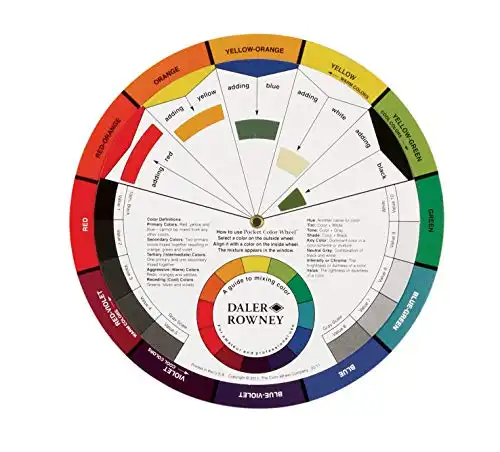
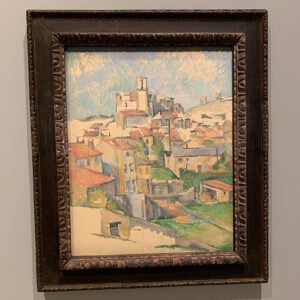

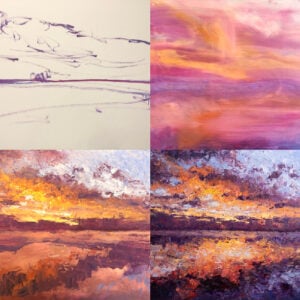
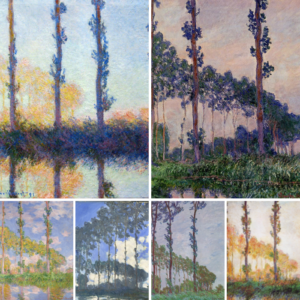


Thanks for this Dan, I agree that a little colour theory goes a long way! I advise students to look for opportunities to exploit colour as they go in order to spice up the effect! Nothing like an orange boat floating on a blue sea, or a red cottage nestled in the green grass.
Could not agree more Norm. Great examples!
Thank you so much for this information there is so much to take in for a novice like me but I will keep reading .I’ve just taken painting back up after 10 years then I used watercolours now I’m trying acrylics. It’s going to be a long journey but such an enjoyable one ..thank you again for all your advice you give ?
Hi Lydia! No problem at all glad you liked it. Let me know if you need any help along way 🙂
Dan Scott
I want to mirror the compliments. I’ve been looking for different tint options for my dogs, because I make all of their treats. I work with them everyday, and healthy treats are a must in my book!
Although, dogs see differently than humans do, I appreciate getting to play with decorating their treats with healthy options.
Thank you! Thank you for educating us by willingly sharing your knowledge and gifts!
Thank you so much Dan, your advice is so complete and everything I was looking for!
No problem at all Gerbrecht 🙂
Dan
Nice use of graphics in your articles.
Thank you for telling me your knowledge.
May I ask a few questions?
Will color combination be established regardless of saturation? Also, should I understand that if saturation is low it will have less effect?
Hi there! Saturation will always have an impact on the overall color combination. It is after all an important element of a color. And yes, in general, a color with a low saturation will have less impact than a color with a high saturation.
Thanks
Dan
I am amakeup artist new to the industry. I’m 64 to be exact and picked this as a second career since retired. Have certificate but never really received the color theory I needed to recognize skin n color matching. I hope by rereading this article (a million times) I will finally “get it”. Until then I rely on guess work and just what looks good.
This was a really useful post for me, who tends to have “jelly” colours in painting! The part on choosing warmth and colour triads before beginning was a real lightbulb moment! I usually bang ahead in a fit of enthusiasm for the colour or shape of something I have seen and then paint myself into a colour corner. Thank you for all the great posts.
No problem thanks Suzanne! Dan
Thank you!!!
No problem Antonella!
nice .enjoyed it
Thanks!
Thank you Dan, this was informative and stimulating information.
No problem glad you enjoyed it! Dan
The best example of understand principles of colour I’ve ever come across…thank you Dan Scott
Awesome! Thanks Rina
Such a good lesson… good to save for a reference. Thanks.
Great information. This is clearly written so anyone can understand and more importantly apply the basic principles of colour theory. Thank you.
Great to hear Cat! Thanks, Dan
This helped a lot! THANK YOU DAN SCOTT !!!!!!!!!!!!!!!!!!!!!!!!!!!!!!!l!!!!!!!!!!!!!!!!!!!!!!!!!!!!!!!!!!!!!!!!!!!!! haha find the difference in the exclamation marks.
Glad to hear! Thanks, Dan
Thanks, Dan! This is the best explanation of color I have read in a long long time! Everything “clicked”!
That is great Nancy! Happy to know this has helped. Dan
Thank you for this great guide to colour theory. I am experimenting with watercolour painting. To lighten watercolours I dilute them with more and more water. I don’t add white to create my value scale. Is that a correct understanding? Or am I to gray down the yellow using Payne’s grey? In my landscape painting of a town built into and on yellow and grey sandstone, and the houses are made with the same sandstone, I am truly dependent on value to make this a good painting. As a beginner, if I use your Split Complementary technique for yellow ochre which is more of a yellow orange, the split complemetary triangle would be would be yellow green, yellow orange and purple. The roofs of house are more of the red hue so I have to make sure they are red purple for this to work well..
I appreciate your guidance before I give this particular painting up as a novice.
Thanks Sharon! I will send you an email on this separately.
Dan
I would like to thank you very much for this great guide to color theory. I am experimenting with watercolor painting. To lighten watercolors I dilute them with more and more water.
Thank you for clarifying the color theory terminology!
I’m working in water colors….I’m going to apply this new knowledge…thank you!
Thank you so much for sharing.
Thank you Dan for your generous sharing. There is so much to learn; Visual art it is indeed a long journey.
Good article, very interesting.
Brilliant explanation. I feel I have a solid base to find out more thanks to the clear description. Very much appreciated. One key bit of advice is draw and paint what I see not what I know. Very difficult.
Grazie è stato molto utile.
Thank you for this post. Very informative and to the point. Thank you.
beautifully described……………..
This was very informative! I just had one moment of confusion during the History section. It says Sir Issac Newton developed the first color wheel around the start of the 17th century, but if it was *the* gravity defining Issac Newton, this couldn’t be possible as he was born in 1642, the middle of the 17th century. If it was his father (who shared the same name) it’s more plausible, but I think you just meant to say start of the 18th century (1700s). Otherwise, loved how the information was presented in a digestible way! I like to paint storm scenes and revisiting Color Theory has given me some new inspiration.